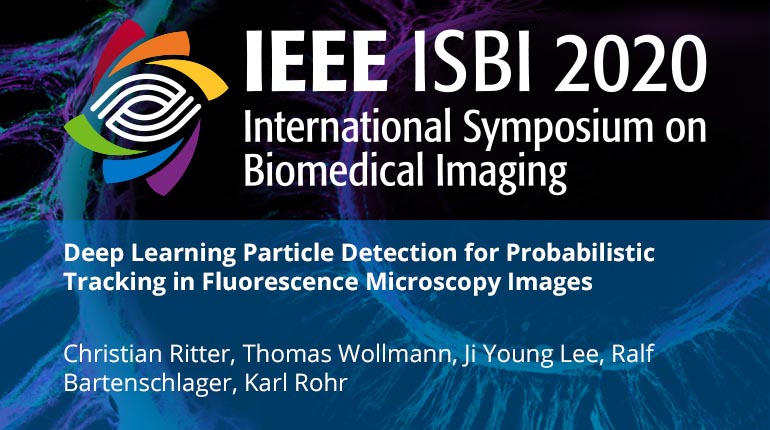
Already purchased this program?
Login to View
This video program is a part of the Premium package:
Deep Learning Particle Detection for Probabilistic Tracking in Fluorescence Microscopy Images
- IEEE MemberUS $11.00
- Society MemberUS $0.00
- IEEE Student MemberUS $11.00
- Non-IEEE MemberUS $15.00
Deep Learning Particle Detection for Probabilistic Tracking in Fluorescence Microscopy Images
Automatic tracking of subcellular structures displayed as small spots in fluorescence microscopy images is important to quantify biological processes. We have developed a novel approach for tracking multiple fluorescent particles based on deep learning and Bayesian sequential estimation. Our approach combines a convolutional neural network for particle detection with probabilistic data association. We identified data association parameters that depend on the detection result, and automatically determine these parameters by hyperparameter optimization. We evaluated our approach based on image sequences of the Particle Tracking Challenge as well as live cell fluorescence microscopy data of hepatitis C virus proteins. It turned out that the new approach generally outperforms existing methods.
Automatic tracking of subcellular structures displayed as small spots in fluorescence microscopy images is important to quantify biological processes. We have developed a novel approach for tracking multiple fluorescent particles based on deep learning and Bayesian sequential estimation. Our approach combines a convolutional neural network for particle detection with probabilistic data association. We identified data association parameters that depend on the detection result, and automatically determine these parameters by hyperparameter optimization. We evaluated our approach based on image sequences of the Particle Tracking Challenge as well as live cell fluorescence microscopy data of hepatitis C virus proteins. It turned out that the new approach generally outperforms existing methods.
 Cart
Cart Create Account
Create Account Sign In
Sign In





